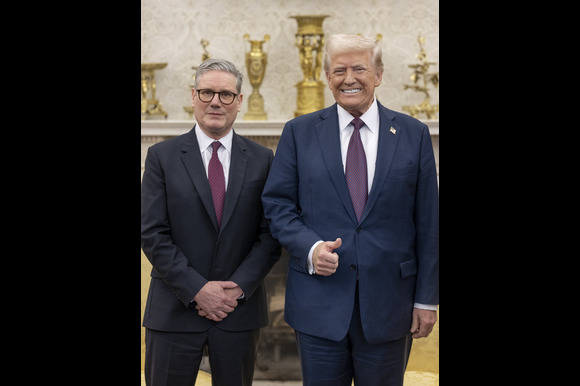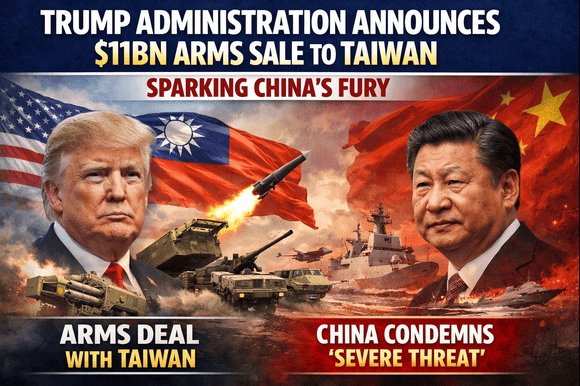
By The White House
WASHINGTON D.C. — In a potential breakthrough for international trade, U.S. President Donald Trump has hinted at the unveiling of a significant trade agreement with the United Kingdom, a development that could mark the first major easing of the tariff tensions that have gripped global markets in recent years.
In a post late Wednesday on Truth Social, Trump wrote, “Big News Conference tomorrow morning at 10:00 A.M., The Oval Office, concerning a MAJOR TRADE DEAL WITH REPRESENTATIVES OF A BIG, AND HIGHLY RESPECTED, COUNTRY.” Though he did not explicitly name the country, a source familiar with the matter confirmed it is the United Kingdom.
If confirmed, the deal could signal a thaw in Trump’s aggressive trade policy stance and provide a much-needed reprieve for both U.S. and UK businesses facing mounting pressure from tariffs and regulatory uncertainty.
Deal Could Tackle Key Barriers
According to reporting from the Financial Times, the proposed agreement could involve the UK rolling back non-tariff trade barriers, notably the 2% digital services tax currently imposed on major U.S. tech firms such as Google, Apple, and Amazon. In exchange, the United States may reduce or eliminate the 25% tariffs currently levied on British aluminium, steel, and automobile exports.
Peter Navarro, Trump’s senior trade adviser, named the UK as one of the most likely candidates for a first major deal, along with India, South Korea, and Japan. “We’ve got a little twist in the India story,” Navarro remarked, alluding to possible delays in finalizing talks with New Delhi, “but there will be deals.”
Skepticism Persists Among Experts
Despite the apparent optimism from the White House, trade policy experts caution that the announcement may be more symbolic than substantive. Jacob Jensen, a senior fellow at the American Action Forum, noted that any agreement revealed on Thursday is likely to be a memorandum of understanding (MoU), rather than a formal trade treaty.
“Deals that significantly alter economic relationships usually take months or even years to negotiate and ratify,” said Jensen. “This is likely an interim arrangement designed to ease some short-term pressures, not a comprehensive pact.”
Trump’s administration has repeatedly claimed that it is negotiating with over a dozen countries, but has yet to finalize any binding multilateral trade agreements during his second term.
Broader Context: Tariff Wars and Economic Fallout
The potential agreement comes amid a turbulent global trade landscape, shaped by the Trump administration’s confrontational stance on tariffs. Since early 2025, the White House has pushed ahead with sweeping new duties under the so-called “Liberation Day” trade strategy, targeting countries deemed to have “unfair advantages” in the global market.
The result has been a sharp escalation in trade tensions — particularly with China — and a notable economic toll. U.S. GDP contracted in the first quarter of 2025, marking its first quarterly decline in three years. Analysts attribute the slowdown in part to preemptive stockpiling by businesses bracing for increased costs due to tariffs.
In the case of China, tariffs as high as 145% remain in place on most imports, while Beijing has retaliated with duties of up to 125% on American goods. Despite upcoming talks in Geneva between Treasury Secretary Scott Bessent, U.S. Trade Representative Jamieson Greer, and Chinese officials, there are low expectations for an immediate breakthrough.
President Trump has made clear that current tariffs will remain until substantial concessions are made by Beijing. “There won’t be another extension,” he warned last month, referencing the expiration of a temporary 90-day tariff pause introduced in April.
A Fragile Path Forward
The Trump administration has a history of abrupt reversals on trade policy. After securing the USMCA agreement to replace NAFTA, Trump later reinstated tariffs on Canadian and Mexican goods, citing national security concerns. Analysts caution that any new deal with the UK could meet a similar fate if political winds shift.
Still, any easing of trade barriers — even temporary — could offer welcome relief to businesses and consumers facing rising costs due to supply chain disruptions and inflationary pressures. The business community will be watching Thursday’s announcement closely for signs of genuine policy change versus political posturing.
Markets and global allies alike are expected to scrutinize the details of the announcement, hoping it sets a precedent for more stable trade relations in the months ahead.



